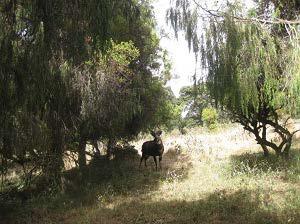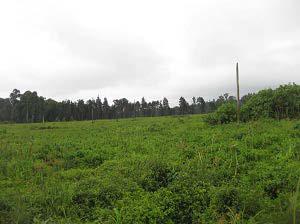Solomon Ayele Tadesse
The overall aim of this study is to examine the major environmental and anthropogenic factors affecting the habitat quality, habitat use, and foraging ecology of Mountain Nyala in Munessa-Shashemene dry afro-montane forests, south-eastern Ethiopia.

Adult male Mountain Nyala (our study species) taken in the Munessa forest.
The study will be conducted in the Munessa-Shashemene dry afro-montane forests. The study area is situated in Oromiya Administrative Regional State some 240 km south of Addis Ababa, Ethiopia. Its geographical location is at 7°13′N, 38°37′E. The altitude range extends from 2100 to 2700 meters above sea level (Demel and Granström, 1995).

Open area in the Munessa forest which serves as a typical foraging ground.
The mean annual rainfall is about 1250 mm. The mean annual temperature varies between 15 °C and 20 °C (Demel and Granström, 1995). The soils are reddish, freely draining, and of medium to heavy texture (Demel and Granström, 1995). The vegetation is composed of both natural and plantation forests where the main forest blocks are found on the escarpment and associated plateau lying between the rift valley lakes and the eastern edge of the rift valley (Demel and Granström, 1995). The natural forest is heavily degraded and characterized by many gaps resulting from uncontrolled logging. Some forests have been totally cleared and converted into agricultural fields, others suffered from different influences, such as heavy grazing and selective logging (Demel, 1992).
The Munessa-Shashemene forest has an area of approximately 111 km2 of natural and plantation forests that could be potentially inhabited by a variety of wild animal species (Evangelista et al. 2007).The plantations in the Munessa-Shashemene forests are potentially good habitats for Mountain Nyala. For example, Evangelista et al. (2007) note that although the plantation trees offer sparse herbaceous understory, they are very important habitat for Mountain Nyala, with plantation forests and may provide escape refuge from risk of predation, valuable cover for thermal regulation (e.g. Black et al. 1976), sources of food, and travel corridors especially in areas where natural forests are extremely disturbed and/or limited (Evangelista et al. 2007; Wildlife Conservation Department (WCD) unpublished field reports).